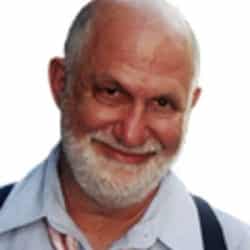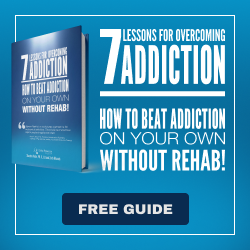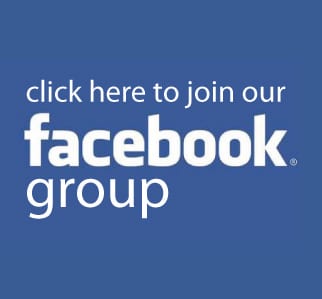The Top Ten Problems with the “New” Medical Approach to Addiction
The New York Times announced on Sunday the new medical approach to addictiontaking hold in America’s medical schools, where addiction medicine is becoming a recognized specialty. Although the Times welcomes this development (it was inevitable), it is doubtful it will improve America’s addictive dispositions.
Here are the top ten problems that accompany the Times’ announcement, starting with its opening paragraph:
There is an age-old debate over alcoholism: is the problem in the sufferer’s head – something that can be overcome through willpower, spirituality or talk therapy, perhaps – or is it a physical disease, one that needs continuing medical treatment in much the same way as, say, diabetes or epilepsy?
Increasingly, the medical establishment is putting its weight behind the physical diagnosis. In the latest evidence, 10 medical institutions have just introduced the first accredited residency programs in addiction medicine, where doctors who have completed medical school and a primary residency will be able to spend a year studying the relationship between addiction and brain chemistry.
1. The new approach isn’t new. The Times acts as though psychiatry has been psychoanalyzing addicts and alcoholics for the last fifty years. It hasn’t been. For some time, the dominant assumption in the field has been that alcoholism is a disease, one in large part physiologically dictated. Certainly with drug addiction, the dominant assumption in the twentieth century — one which was invented in its early part — is that addiction IS a specific physiological syndrome. (Does the Timesargue that people think heroin addiction was psychosomatic?)
2. We’ve been changing what addiction means away from a drug-medical focus. Due to the idea that heroin addiction is a highly specific medical syndrome, we were slow coming around to recognizing other drug use — starting with cocaine and nicotine — as addictive, which only occurred in the 1980s. Recent decades are actually all about how addiction is being refocused – even redefined – in ways that don’t stem from biochemistry. It is not because we know more about how nicotine operates that the Department of Health and Human Services decided it was addictive in 1988, after the Surgeon General’s Report specifically rejected that idea in 1964.
3. Point to the brain and repeat after me: “It’s a disease.” The most unnerving sentence in the Times article is: “researchers discovered through high-resonance imaging that drug addiction resulted in actual physical changes to the brain.” What exactly does addiction look like in the brain – can we diagnose it that way? Houston: that’s a negative. If the idea is that drugs produce significant changes in the brain, how does that distinguish them from, say, sex, eating, and other primary activities? That things affect the brain does not make them addictions or diseases — or determine whether they are healthy or unhealthy.
4. Addiction is no longer about drugs. According to the Times, addiction medicine is about “alcohol, drugs, prescription medicines, nicotine and more – and [the need to] study the brain chemistry involved, as well as the role of heredity.” It is first notable that some of the things on the list – like the aforementioned nicotine – have only recently been added. But, more importantly, what goes in that “and more” category? Is the Times aware the DSM-5 has added gambling to the list of addictions, while holding in abeyance sex, eating, video games? Is it aware that the leading journal in the addiction field, called Addiction, devoted its last issue to whether food is addictive?
5. The new approach isn’t medical. The argument over treating addiction medically as a brain disease isn’t with psychiatry, but with the 12 steps. Of course, the 12 steps are anything but medical, but their identification of addiction as a disease has put them so firmly in bed with disease medicine that they will never be extricated. The American Society of Addiction Medicine (ASAM) was created — and is dominated by — true-believer 12-step types. How the whole battle between ASAM and the new addiction medical specialty, the American Board of Addiction Medicine (ABAM) plays out will be fascinating to watch.
6. The excluded middle. The Times writes as though the world is divided between psychoanalysis and the 12 steps, on the one hand, and brain chemistry, on the other: “Equally maligned is the idea that psychiatry or 12-step programs are adequate for curing a disease with physical roots. Many people who abuse substances do not have psychiatric problems. . . .” Anyone out there heard of CBT, motivational interviewing, the community reinforcement approach; of Aaron Beck, Alan Marlatt, and – ahem – me (I was selected one of the ten most influential addiction experts in America)? Considerable research has generated effective non-medical approaches to addiction other than the 12-steps – will these new medical programs incorporate or ignore them? (The article does note, “Few addiction medicine specialists advocate a path to recovery that depends solely on pharmacology, however.”)
7. Pharmaceutical treatments have problems. Although the Times greets new pharmacological treatments as being great breakthroughs, it also has to note some drawbacks, to wit: “Increasing interest in addiction medicine is a handful of promising new pharmaceuticals, most notably buprenorphine (sold under names like Suboxone), which has proved to ease withdrawal symptoms in heroin addicts and subsequently block cravings, though it causes side effects of its own” (emphasis added). The Times hopefully adds, “Other drugs for treating opioid or alcohol dependence have shown promise as well.” But there is a history of pharmacological treatments appearing, being greeted as remarkable new cures, and then disappearing. The latest example on this long list is an authoritative synthesis of research on naltrexone for heroin addiction, which found: “the general run of opiate-addicted patients do almost as well given no active medication as when prescribed the opiate-blocking drug naltrexone.”
And, of course, it is prescription medications to which Americans are increasingly becoming addicted. As the Times subheaded its interview with Nora Volkow , the biggest proponent of addiction medicine: “An addiction expert faces a formidable foe: Prescription drugs.”
8. The medical approach derails self-cure. As the Times conceives the issue:
Armed with that understanding, “the management of folks with addiction becomes very much like the management of other chronic diseases, such as asthma, hypertension or diabetes,” said Dr. Daniel Alford, who oversees the program at Boston University Medical Center. “It’s hard necessarily to cure people, but you can certainly manage the problem to the point where they are able to function” through a combination of pharmaceuticals and therapy. . . . “It’s not surprising to us now that when you stop the treatment, people relapse,” Dr. Alford said. “It doesn’t mean that the treatment doesn’t work, it just means that you need to continue treatment.” Those physical changes in the brain could also explain why some smokers will still crave a cigarette 30 years after quitting, Dr. Alford said.
So what do we do with the fact that the government’s own research has determined that the overwhelming number of alcoholics cure themselves, without treatment? Think about smokers in this regard. Forty million American smokers quit on their own through the 1980s, but the idea that they can do so without pharmacological assistance dwindles with each passing year.
9. Those stupid doctors. The fundamental assumption of the article – and the addiction medicine movement – is that doctors are fools:
If the idea of addiction as a chronic disease has been slow to take hold in medical circles, it could be because doctors sometime struggle to grasp brain function, Dr. Volkow said. “While it is very simple to understand a disease of the heart – the heart is very simple, it’s just a muscle – it’s much more complex to understand the brain,” she said.
Of course, alternatively, maybe many doctors have seen people quit smoking and cut back their drinking on their own? The single most empirically validated form of alcoholism treatment is brief intervention, which comprises minimalistic interactions between health care workers and alcoholics where medical personnel point out excessive drinking, set goals and discuss methods to cut back with patients, and then track progress – usually meaning reduced drinking. Will addiction medicine throw that baby out with the bath water?
10. And what about policy? The Times doesn’t juxtapose the massive discussion currently ongoing about drug policy with the addiction medicine movement. But they are deeply entwined. If addiction is a disease caused by drugs (what was that you said about gambling?), then it simply makes no sense to loosen penalties and restrictions on drug use, since people will inevitably become hooked when drugs are more readily available. In a fundamental way, the formalized addiction medicine approach challenges efforts to rethink how, as a society, we deal with drugs. Would we willingly loosen carcinogens on our society and our children? So how can we accept that people voluntarily take drugs (leaving aside prescription medicines, that is, which are now the fastest growing drugs of abuse)?
In short, to say the least, the new addiction medicine specialty may not result in such clear-cut benefits and progress as, say, the discovery of germ theory led to the elimination of major infectious diseases.





